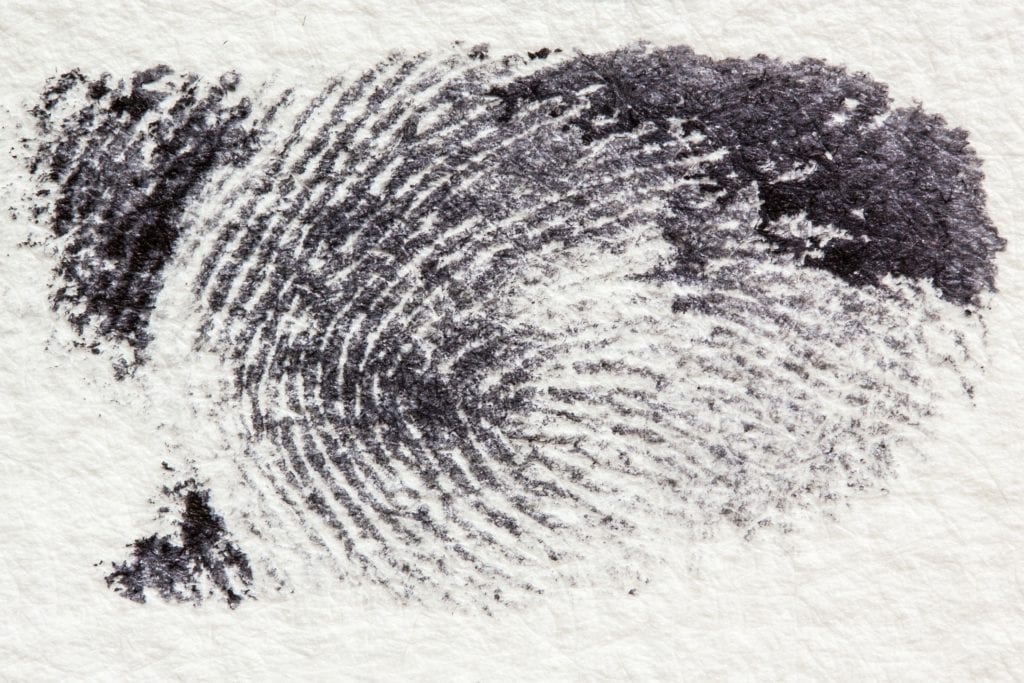
Fingerprint analysis is one of the ways that crime scene techs tie people to crime scenes.
Locating, preserving and analyzing fingerprints found at crime scenes is a very important part of police work. Because every person on the planet has an individual set of fingerprints, it is a good way to prove that a specific individual was present at the crime scene at some point, or touched an item used in the commision of a crime. But how exactly do detectives go about finding and capturing these elusive prints, and how accurate are they in making connections between prints and people?
Welcome back to our ‘evidence 101’ series, where we break down the methods that Michigan police officers use in collecting evidence, and how they use it to narrow down their investigation and make arrests. We’ve already discussed linking guns to crime scenes and solving cyber crimes, so in this series we are going to be looking at fingerprints as evidence.
Where do detectives find fingerprints?
Fingerprints can be found anywhere. On door knobs, walls, table tops, and window panes. On cigarette butts, coffee cups and knife handles. Even in those elusive places that we don’t think about touching, like the inside of car door handles and the knobs on dresser drawers. Anywhere that a person’s fingers make contact with a surface, a trace of oil and sweat is left behind. An indelible reminder that they were there, however briefly, and for whatever reason.
Types of fingerprints:
Crime scene investigators classify fingerprints into three different categories, based on the type of surface they were left on, and whether or not they are visible:
- Fingerprints on soft surfaces These type of fingerprints are imprints that are left when a person’s fingers press into a soft or yielding surface, and leave a three-dimensional print behind. Surfaces where this type of print is found include wet paint, fresh caulk, soap, warm wax, and blood that hasn’t yet congealed.
- Fingerprints on hard surfaces: These can be divided into two subcategories: patent prints, which are visible fingerprints, and latent fingerprints, which are invisible.
- Patent (visible): These are the prints that you can see with the naked eye. They are found imbedded in soft or wet surfaces, like blood or paint. Alternatively, they are left when the finger is coated in a substance that transfers to another surface, leaving an exact print of the finger. This could include wet transfers like blood, oil or ink; or dry transfers, like dust or dirt. Patent prints can be found on a wide variety of surfaces, including smooth, rough, porous or nonporous.
- Latent (invisible) prints are the kind that people leave all over surfaces during everyday contact with objects, but they are not immediately visible to the naked eye. A clean hand can still leave a fingerprint because our skin constantly produces trace amounts of oil and sweat, which coat our fingers and leave marks that capture the whorls and ridges of our individual fingerprints. These tend to be found on walls, door handles, and commonplace objects like plates, books and even guns.
Join us next time, as we discuss the methods used to expose latent prints, and how crime scene techs “collect” them for analysis. Until then, if you or a loved one have been accused of a crime in Michigan, call The Kronzek Firm immediately at 866 766 5245. Our highly skilled criminal defense attorneys have spent decades fighting to protect the rights of Michigan’s citizens. We can help you too. An attorney is always available to take your call and discuss your case, at any hour of day or night.







